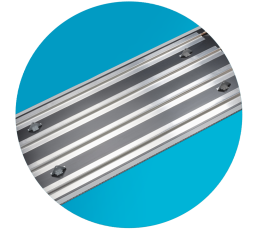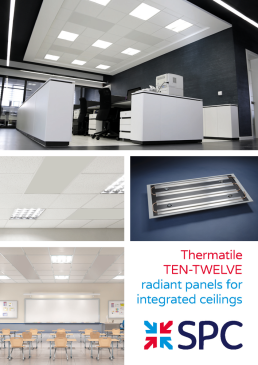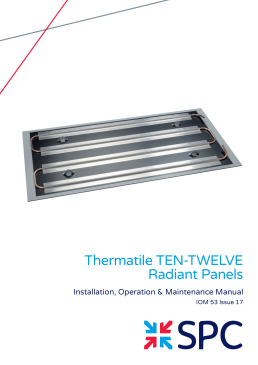Thermatile TEN Radiant Panels
SPC Thermatile TEN Radiant Panels have been custom-made to provide an optimal solution for suspended T-bar ceilings that require single panels up to 3.6 metres. This product incorporates cutting-edge D tube technology and a 5.5mm composite panel, resulting in a heat exchanger that is highly efficient and a double skin fascia that is the most rigid in the industry.


Ceiling Mounted
Thermatile TEN radiant ceiling panels feature high-performance insulation across the entire upper surface, extending to the panel edges and without any fixed sidewalls. As a result, the panels lose very little heat into the void, ensuring a high percentage of the heat output radiates into the room below.

Plasterboard Mounted
Thermatile TEN radiant ceiling panels can be installed in plasterboard ceilings using a simple and easy-to-install ceiling frame. This option is also suitable for anti-ligature purposes and does not require additional access panels due to its specially designed system that uses appropriate fixings and screws.

Wall Mounted
Thermatile TEN radiant panels are versatile and can also be mounted on walls. A specially designed bracket is available that allows the panels to be positioned at an angle, and the panels come with a ball guard to prevent objects from becoming stuck between the panel and the wall.

Zone Control Kit
The SPC control kit provides precise control of radiant panels within a designated area or zone. It includes a Belimo rotary actuator, a Belimo zone valve, an SPC dual-sensing digital thermostat, and an SPC black bulb temperature sensor. The kit comes with a 5-year warranty as standard.

Testing Standards
Manufacturers can provide a BS EN 14037 certificate from the University of Stuttgart, Germany, for tested radiant panels. This test is crucial as it determines the accurate heat output of a 3m long and 600mm wide panel in a free-hanging or open ceiling position.
It is recommended to include this requirement in any specification to ensure correct heat outputs. The use of the BS EN 442 radiator test output by manufacturers may result in an incorrect output figure.

